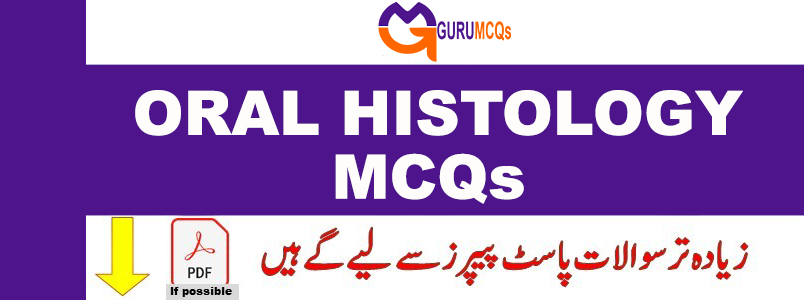
Histology, derived from the Greek words “histo,” meaning tissue, and “logy,” meaning science, is the scientific discipline dedicated to the study of tissues. By delving into oral histology and embryology, individuals can establish a robust understanding of oral biology. The subject encompasses the examination of cellular and tissue development and structure, including the various stages of tooth development and maturation. Areas of focus include the constituents of tissues such as cells, intercellular substances, tissue fluids, and components of human teeth like enamel, dentin, and dental pulp. Gurumcqs.com offers Oral Histology Multiple-Choice Questions (MCQs) along with answers, carefully curated from reputable reference books on oral histology. These MCQs are valuable not only for academic purposes but also for interview preparation, entrance exams, competitive assessments, and certifications, catering to individuals at all levels of expertise, whether experienced professionals, newcomers, or students. Additionally, those interested can explore Oral Pathology MCQs for further study.
111. Interdependency of osteoblasts and osteoclasts in bone remodeling is called as_____________?
A. Lacunae
B. Coupling
C. Reversal lines
D. Canaliculi
112. Periodontal fibres joining cemental surface of one tooth, to cemental surface of adjacent tooth are called____________?
A. Gingivodental
B. Cemental fibres
C. Horizontal fibres
D. Transseptal fibres
113. Sharpey’s fibres are derived from_____________?
A. Hertwig’s root sheath
B. Epithelial rests of malassez
C. Alveolar bone
D. Dental follicle
114. Periodontal ligament has predominantly_________?
A. Type II collagen fibres
B. Oxytalan fibres
C. Elastic fibres
D. Type I collagen fibres
115. Which of the following groups of fibres are not attached to alveolar bone ?
A. Transseptal
B. Horizontal
C. Oblique
D. Apical
116. The most abundant principle fibre group in periodontal ligament is____________?
A. Horizontal
B. Transeptal
C. Apical
D. Oblique
117. In mammals independent and tough suspension for teeth is provided by____________?
A. Alveolar sockets
B. Cementum
C. Gubernacular cords
D. Periodontal membrane
118. Group of fibres, which resist the masticatory forces___________?
A. Dentogingival
B. Transeptal
C. Oblique
D. Horizontal
119. Cementicles are found in the_____________?
A. Gingiva
B. Periodontal ligament
C. Alveolar bone
D. Cementum
120. Periodontal ligament is made up of____________?
A. Type I collagen
B. Type I and Type III collagen
C. Type I and Type II collagen
D. Type I and Type IV collagen

Pingback: Dental Materials MCQs for Competitive Exam Preparation - GURU MCQS